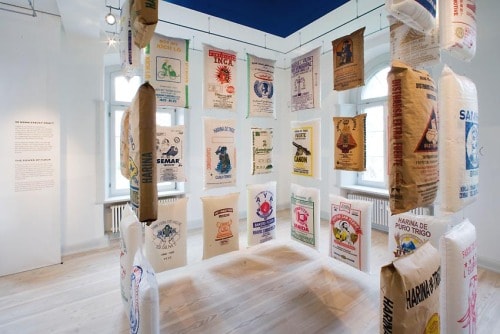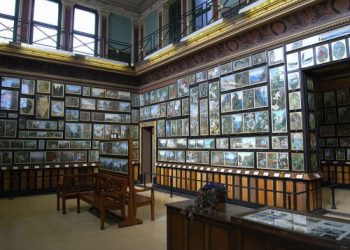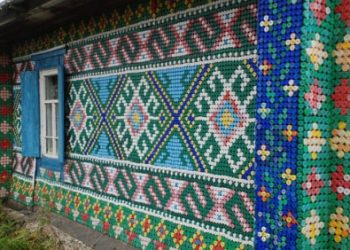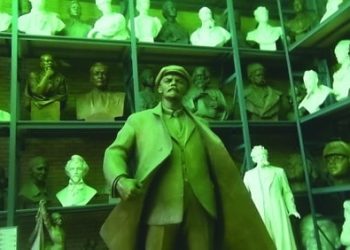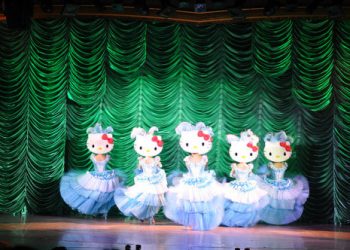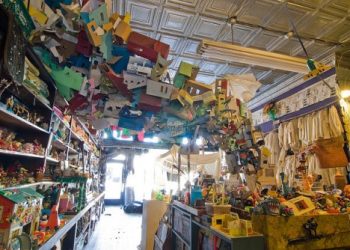When I visited Deutschland (or Germany for non-Germans) a few years back, I noticed their obsession with recycling. Everywhere you looked there was some kind of receptacle for a specific kind of material; blue for paper, yellow for plastic and metals, red for food and plant waste, etc. Glass is even sorted by colour. Anyway, it comes as no surpise to me that Germans are now transforming old flour sacks into art, or at least recognising their historical value. Yep, that’s right. The first Sunday of every month in Ahrensburg, the Flour Art Museum is open to the public. With nearly 3,000 bags from 122 countries in the exhibit, the museum starts with wheat around the world then moves the “myths” of the different cultures, like the story of the Old Wives Mill. In the Symbol Room, the international language of flour-sack symbols is discussed, where visitors learn about the popular motifs of locomotives and lions, and why a camel from Morocco means the same as a dragon in China. Ever heard of a Kleiekotzer? It literally translates to “bran puker”, it was a gargoyle-like mask found in old corn mills that “puked” the separated bran out of its mouth. I WANT ONE! The museum ends with the White Room, a feast for senses, and the Sackotheque, an archive of all the sacks arranged systematically according to their English names of their country of origin. I bet you’re wondering how this all started. Well, back in 1998 owner Volkmar Wywiol (who happens to make industrial baking products for a living) stumbled upon an empty flour sack on the beach in Dubai and thought about its connection with our international cultural heritage. And with that, another random museum was born. And the best part? There’s a book (of course) and if you happen to be a hoarder of old flour sacks, the museum wants it to be part of their collection. So send yours in today!!!
